A freedom fighter is a person engaged in a resistance movement against what they believe to be an oppressive and illegitimate government. Here is a list of female freedom fighters.
1. Rani Lakshmi Bai
Lakshmibai, the Rani of Jhansi (19 November 1828 – 17/18 June 1858) was an Indian queen and warrior. She was one of the leaders of the Indian Rebellion of 1857 and became for Indian nationalists a symbol of resistance to the rule of the British East India Company in India. Manikarnika was born into a Maratha family at Varanasi.
Manikarnika was one of the great freedom fighter in India. She was married to Raja Gangadhar Rao, the Maharaja of Jhansi in 1842 and became the Rani of Jhansi. After her marriage Manikarnika became Lakshmibai, so named in honour of the goddess Lakshmi.
In 1851, Rani Lakshmibai had a son, Damodar Rao. He died at the age of about four months. On the day before the raja’s death in November 1853, he adopted a son. After the death of her husband the head of the British government of India, Lord Dalhousie, refused to allow her adopted son to become raja and Jhansi was then ruled by the British. She was fighting against British for Jhansi.
She always use or carry her weapons with her. According to tradition with Damodar Rao on her back she jumped on her horse Badal from the fort. They survived but the horse died. In the battle of Kotah ki Serai in which the British forces commanded by Sir Hugh Rose conquered Gwalior, fought on 17 and 18 June 1858, she died.
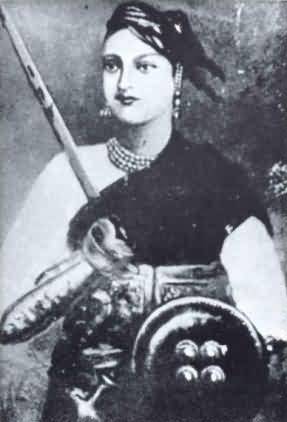
Wikipedia /Public Domain | Rani Of Jhansi
2. Kasturba Gandhi
Kasturba Mohandas Gandhi (11 April 1869 – 22 February 1944) was the wife of Mohandas Karamchand Gandhi. In association with her husband, Kasturba Gandhi was a political activist fighting for civil rights and Indian independence from the British. She was born to Gokuladas and Vrajkunwerba Kapadia of Porbandar. Kasturba was married to Mohandas Karamchand Gandhi in an arranged marriage in 1883. Working closely with her husband, Kasturba Gandhi became a political activist fighting for civil rights and Indian independence from the British.
After Gandhi moved to South Africa to practice law, she travelled to South Africa in 1897 to be with her husband. From 1904 to 1914, she was active in the Phoenix Settlement near Durban. During the 1913 protest against working conditions for Indians in South Africa, Kasturba was arrested and sentenced to three months in a hard labour prison. Later, in India, she sometimes took her husband’s place when he was under arrest. In 1915, when Gandhi returned to India to support indigo planters, Kasturba accompanied him. She taught hygiene, discipline, health, reading and writing.
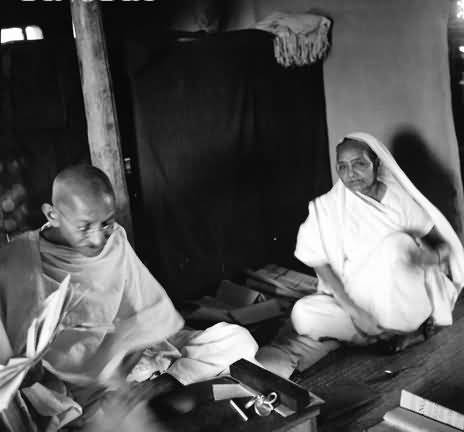
Wikipedia /Public Domain | Mahatma Gandhi And Kasturba Gandhi Seated
3. Sarojini Naidu
Sarojini Naidu (13 February 1879 – 2 March 1949) also known by the sobriquet as The Nightingale of India. Sarojini Naidu was born in Hyderabad. She was an Indian independence activist and poet. Naidu served as the first governor of the United Provinces of Agra and Oudh from 1947 to 1949. She was the first woman to become the governor of an Indian state. She was the second woman to become the president of the Indian National Congress in 1925. Naidu joined the Indian national movement in the wake of partition of Bengal in 1905. She came into contact with Gopal Krishna Gokhale, Rabindranath Tagore, Muhammad Ali Jinnah, Annie Besant, C. P. Ramaswami Iyer, Mahatma Gandhi and Jawaharlal Nehru.
During 1915–1918, she travelled to different regions in India delivering lectures on social welfare, women’s empowerment and nationalism. She also helped to establish the Women’s Indian Association (WIA) in 1917. She was sent to London along with Annie Besant, President of WIA, to present the case for the women’s vote to the Joint Select Committee. She played a leading role during the Civil Disobedience Movement and was jailed along with Gandhi and other leaders. In 1942, she was arrested during the “Quit India” movement. Sarojini Naidu died of a heart attack while working in her office in Lucknow on 2 March, 1949.
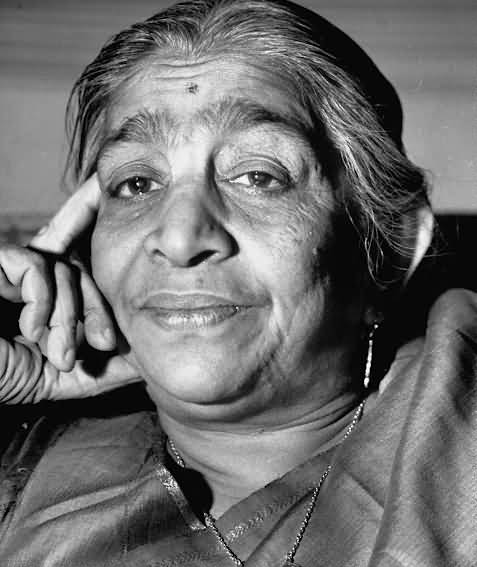
♪Karthik♫ / | Sarojini Naidu In Bombay 1946
4. Kamala Nehru
Kamala Kaul Nehru (1 August 1899 – 28 February 1936) was a freedom fighter, wife of Jawaharlal Nehru, the first Prime Minister of India and the mother of Indira Gandhi. She was known to be deeply sincere, highly patriotic, serious minded and sensitive. Kamala Nehru was born on 1 August 1899 and brought up in a traditional Kashmiri Brahmin middle-class family of old Delhi. Kamala married Jawaharlal Nehru at the age of 17.
Kamala was involved with the Nehrus in the national movement, that she emerged into the forefront. In the Non Cooperation movement of 1921, she organized groups of women in Allahabad and picketed shops selling foreign cloth and liquor. When her husband was arrested to prevent him delivering a “seditious” public speech, she went in his place to read it out. The British soon realized the threat that Kamala Nehru posed to them and how popular she had become with women’s groups all over India. She was thus arrested on two occasions for involvement in Independence struggle activities. Kamala died from tuberculosis in Lausanne, Switzerland on 28 February 1936.
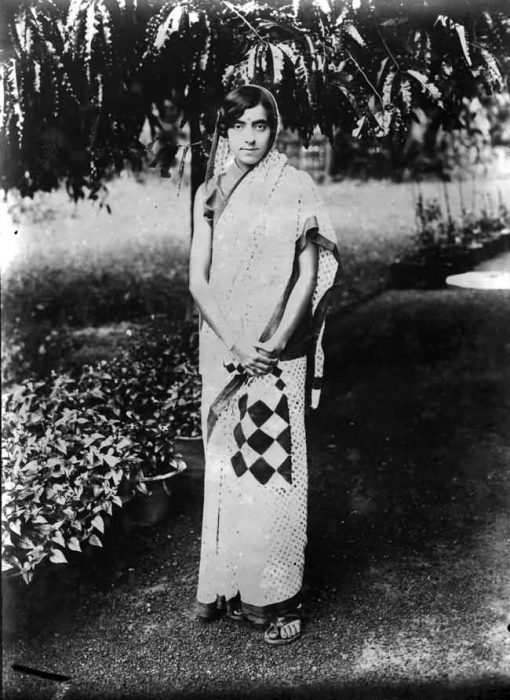
Wikipedia /Public Domain | Kamala Nehru
5. Indira Gandhi
Indira Priyadarshini Gandhi (19 November 1917 – 31 October 1984) was the fourth Prime Minister of India, the first woman Prime Minister of India and central figure of the Indian National Congress party. Gandhi, who served from 1966 to 1977 and then again from 1980 until her assassination in 1984, is the second-longest-serving Prime Minister of India and the only woman to hold the office. Indira Gandhi was the only child of the first Indian Prime Minister, Jawaharlal Nehru. As the Prime Minister of India, Gandhi was known for her political ruthlessness and unprecedented centralisation of power.
She went to war with Pakistan in support of the independence movement and war of independence in East Pakistan, which resulted in an Indian victory and the creation of Bangladesh. Gandhi also presided over a state of emergency from 1975 to 1977 during which she ruled by decree and made lasting changes to the constitution of India. She was killed in 1984 by her Sikh bodyguards a few months after she ordered the storming of the Sikh holy Temple in Amritsar to counter Punjab insurgency. She was also named “Woman of the Millennium” in a poll organised by the BBC in 1999.
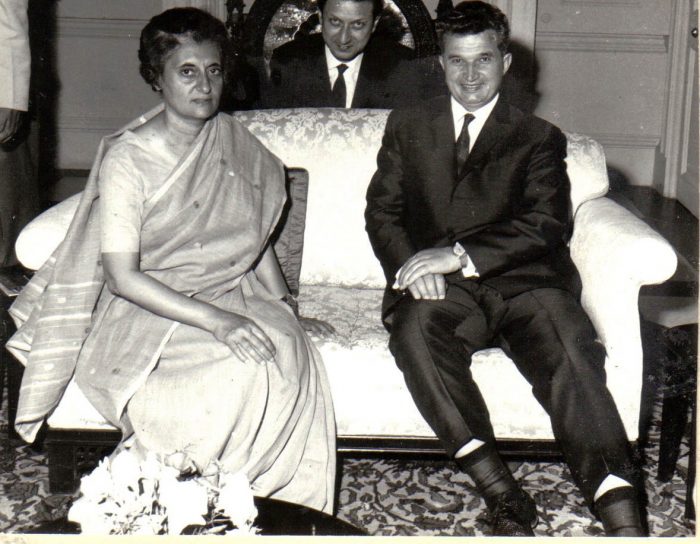
FOCR / | Indira Gandhi And Nicolae Ceauşescu



Connect with us